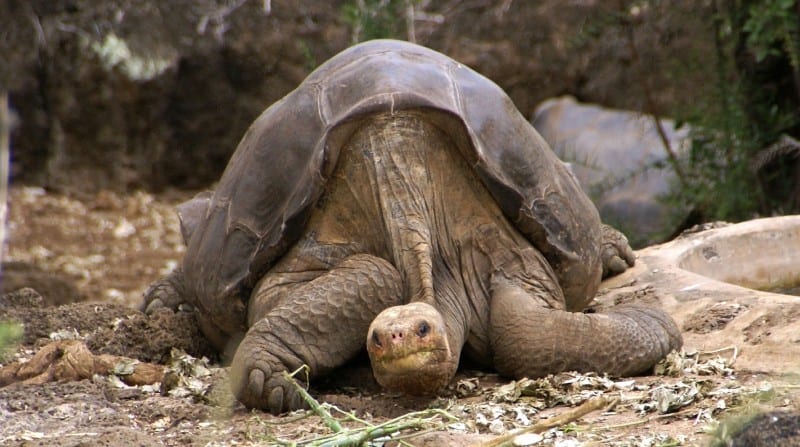
Pinta Island Tortoise Facts
- The Pinta Island Tortoise and its last survivor, Lonesome George, represented the rarest known creature on earth. Researchers discovered Lonesome George in 1971.
- They also chose to investigate the devastation of the native species by non-native wild goats that had been introduced to the islands. That devastation of the food supply serves as the suspected culprit in the loss of the Pinta Island Tortoise.
- George measured 40 inches (100 cm) long and weighed approximately 194 pounds (88 kg). He also lived as a protected resident of the Charles Darwin Research Facility, located on one of the islands.
- Lamentably Lonesome George passed away suddenly on June 24, 2013. His age was estimated at 100 years, which does not measure as especially old for a species of Galapagos Tortoise.
Related Articles
Pinta Island Tortoise Captive Breeding Efforts
Experts made repeated attempts to breed Lonesome George with related species. However, any offspring would not be representational of a true Pinta Island Tortoise.
Eggs occurred many times, yet all proved unviable and failed to hatch. However, in November of 2012, scientists reported that genetic testing identified 17 tortoises that possessed partial genetic matches with the Pinta Island Tortoise.
Some of those hatched during Lonesome George’s captivity, spurring hopes that others of his species still exist in the wild, despite the fact that a decades-long, concerted search had failed to locate any members of this unique animal species.
Pinta Island Tortoise Mysterious Demise
The nature of George’s unexpected passing puzzled many, and others consider it rather elegant, though unfortunate, proof that animals possess emotions similar to our own.
A necropsy of the ill-fated Pinta island Tortoise also indicated that he died of old age, despite the fact that Galapagos Tortoises typically live for 150-170 years in captivity.
At the national park where scientists relocated him to, he also remained well fed and cared for by the same caretaker for 40 years.
All medical examinations prior to his passing indicated that he was in excellent health. Finally, some postulate that he died as a result of how he lived: as Lonesome George.
Species Sharing Its Range
Check out our other articles on 5 Fabulous Gulf of Mexico Fish, Blood Falls, Australian Sea Lion, Tufted Grass Tree, Hornet Robberfly, Eurasian Griffin Vulture, Spotted Cleaner Shrimp
